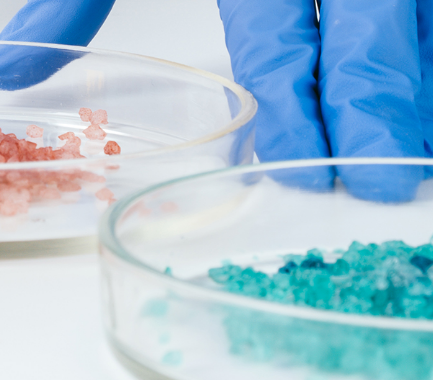Your contact
PENPET-Team - Hamburg

Christoph Meister
Sales
Tel. +49 (0) 40 - 675 7 99 30
sales@penpet.de
Get in touch with us.
Dioctyl Terephthalate (DOTP)
As an ester of Terephthalic Acid, Dioctyl Terephthalate (DOTP) is one of the carboxylic acid esters and is primarily used as a plasticizer in plastics production. The viscous compound can be obtained directly by esterification of Terephthalic Acid and 2-Ethylhexanol. Another method of production is the transesterification of Dimethyl Terephthalate with 2-Ethylhexanol using catalysts such as Potassium Carbonate or Titanium Isopropoxide.
Dioctyl Terephthalate is primarily used as a plasticizer. In particular, it replaces the plasticizer DEHP (DOP), which has fallen into disrepute due to health risks, for example in PVC products for the food sector such as the caps of plastic bottles. Products containing dioctyl terephthalate also include gaskets, pipes, conveyor belts, cable sleeves, waterproof clothing, shoe soles and floor coverings.
At PENPET you can reliably obtain the required quantity of Dioctyl Terephthalate. We look forward to receiving your inquiry for an individual offer. Delivered as a liquid in tank containers, IBCs or drums.
CAS no. 6422-86-2
EINECS no. 229-176-9
Molecular formula: C24H38O4
Synonyms: Bis(2-ethylhexyl) terephthalate, 1,4-benzenedicarboxylic acid bis(2-ethylhexyl) ester, diethylhexyl terephthalate, DOTP, DEHT, DEHTP
Areas of application: Use as a plasticizer
More information
As an ester of terephthalic acid, dioctyl terephthalate is an aromatic compound. The center of the molecule forms a phenyl group. On their opposite sides are two carboxylic acid groups, each of which is esterified with a molecule of 2-ethylhexanol. Depending on the spatial arrangement of the two ester groups on the phenyl center and the branched 2-ethylhexanol on these ester groups, dioctyl terephthalate is present in a mixture of three different stereoisomeric forms that cannot be converted to one another by rotation.
Dioctyl terephthalate is a colorless liquid with a viscous to oily viscosity. Its properties make it suitable as a plasticizer in products requiring high transparency, colorlessness, resistance and migration fastness.
The faintly smelling compound is practically insoluble in water. On contact, dioctyl terephthalate floats on water due to its lower density.
Dioctyl terephthalate is stable during shipment, storage and use under normal pressure and temperature conditions. However, it should be stored away from light, dry and in the closed container in a well-ventilated place. Dioctyl terephthalate reacts with strong acids, bases and oxidizing agents.
The compound is combustible, but difficult to ignite. There is no risk of explosion. The combustion and decomposition of dioctyl terephthalate releases harmful gases such as carbon monoxide and carbon dioxide.
Direct ingestion of dioctyl terephthalate can cause nausea and vomiting. Brief inhalation of the vapors is unlikely to be harmful unless the compound overheats and is already decomposing. In tolerability studies on animals, temporary irritation of the mucous membranes, coordination difficulties and reduced mobility were found after prolonged inhalation of concentrated vapors of dioctyl terephthalate.
Dioctyl terephthalate is approved for contact with food. According to an assessment by the European Food Safety Authority from 2008, up to 1 mg dioctyl terephthalate per kg body weight can be ingested daily without having any effects on health.
There are no known harmful effects of dioctyl terephthalate on nature. Since the substance is hardly water-soluble and also tends to bind to soil particles, it is presumably hardly mobile in the environment.
